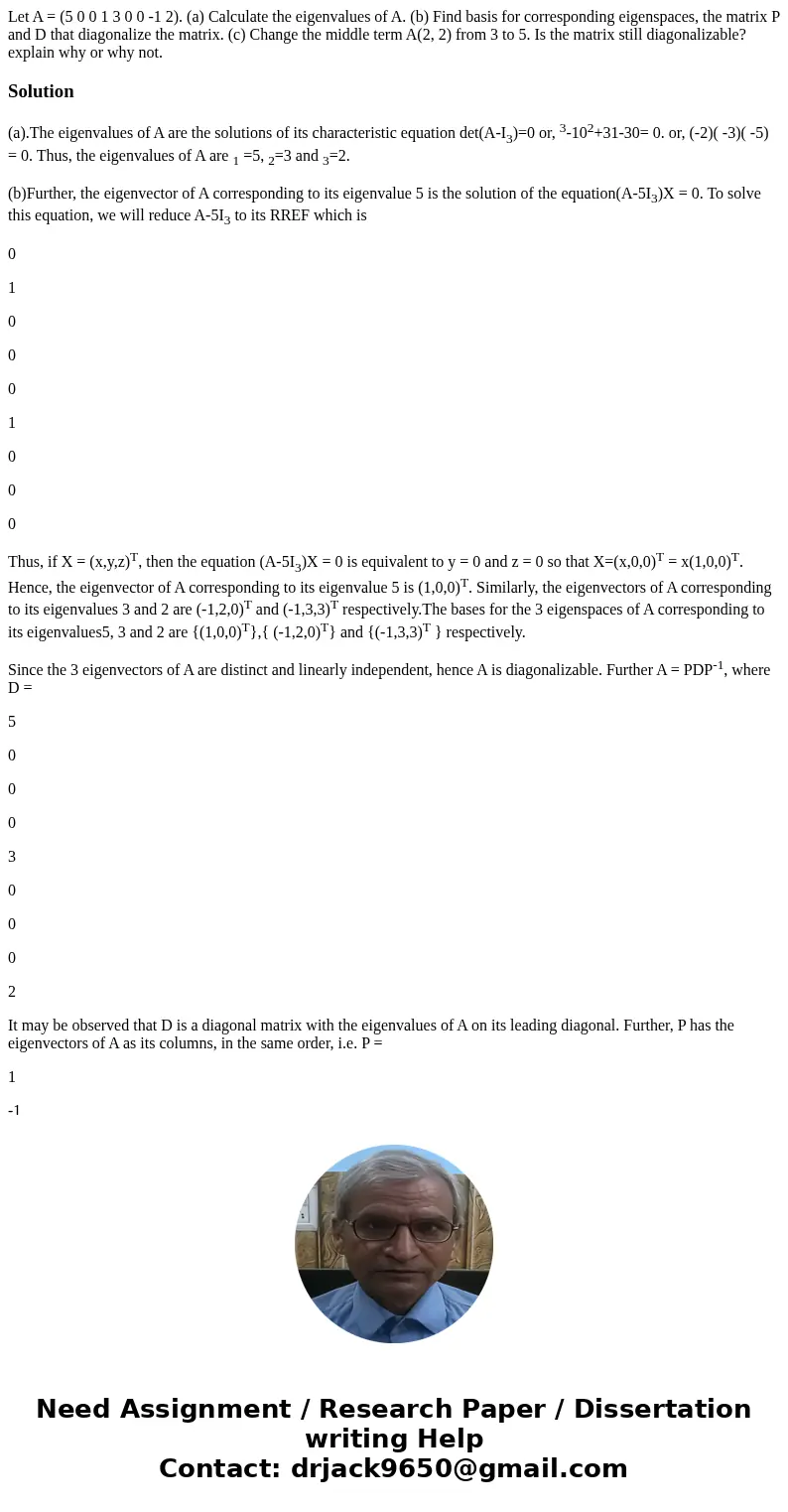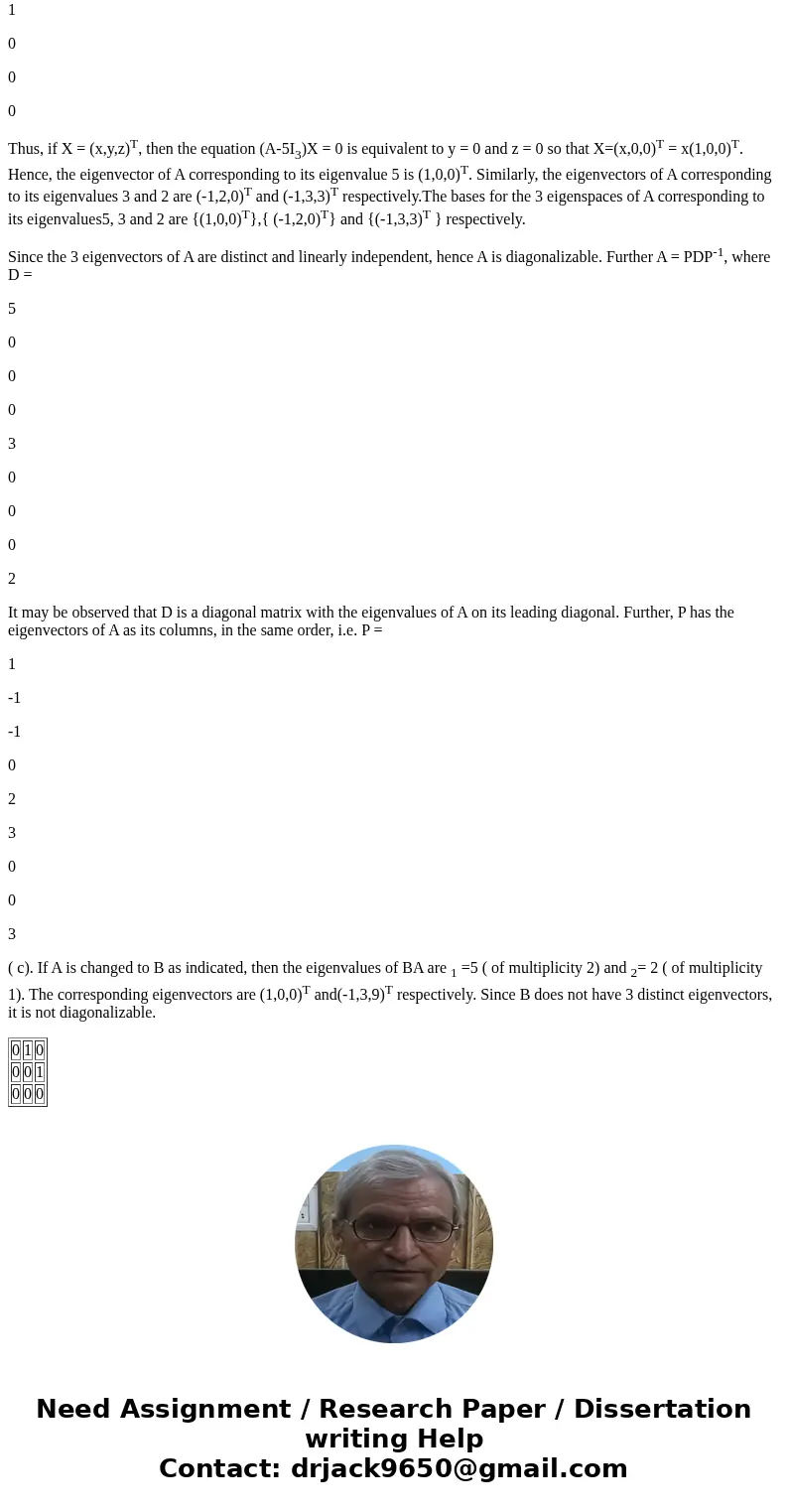Let A 5 0 0 1 3 0 0 1 2 a Calculate the eigenvalues of A b
Solution
(a).The eigenvalues of A are the solutions of its characteristic equation det(A-I3)=0 or, 3-102+31-30= 0. or, (-2)( -3)( -5) = 0. Thus, the eigenvalues of A are 1 =5, 2=3 and 3=2.
(b)Further, the eigenvector of A corresponding to its eigenvalue 5 is the solution of the equation(A-5I3)X = 0. To solve this equation, we will reduce A-5I3 to its RREF which is
0
1
0
0
0
1
0
0
0
Thus, if X = (x,y,z)T, then the equation (A-5I3)X = 0 is equivalent to y = 0 and z = 0 so that X=(x,0,0)T = x(1,0,0)T. Hence, the eigenvector of A corresponding to its eigenvalue 5 is (1,0,0)T. Similarly, the eigenvectors of A corresponding to its eigenvalues 3 and 2 are (-1,2,0)T and (-1,3,3)T respectively.The bases for the 3 eigenspaces of A corresponding to its eigenvalues5, 3 and 2 are {(1,0,0)T},{ (-1,2,0)T} and {(-1,3,3)T } respectively.
Since the 3 eigenvectors of A are distinct and linearly independent, hence A is diagonalizable. Further A = PDP-1, where D =
5
0
0
0
3
0
0
0
2
It may be observed that D is a diagonal matrix with the eigenvalues of A on its leading diagonal. Further, P has the eigenvectors of A as its columns, in the same order, i.e. P =
1
-1
-1
0
2
3
0
0
3
( c). If A is changed to B as indicated, then the eigenvalues of BA are 1 =5 ( of multiplicity 2) and 2= 2 ( of multiplicity 1). The corresponding eigenvectors are (1,0,0)T and(-1,3,9)T respectively. Since B does not have 3 distinct eigenvectors, it is not diagonalizable.
| 0 | 1 | 0 |
| 0 | 0 | 1 |
| 0 | 0 | 0 |


 Homework Sourse
Homework Sourse